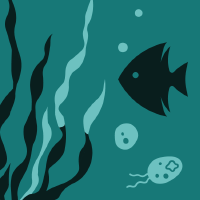Topic Menu
► Topic MenuTopic Editors


Microorganisms in Aquatic Environments

Topic Information
Dear Colleagues,
Water resources support socioeconomic development and maintain ecological balance in modern societies, and thus, their sustainable management is a major challenge in most countries around the world. Anthropogenic activities in all sectors influence the natural water cycle and, consequently, the quality of waters, with wide-ranging impacts on the functioning of ecosystems and human health.
The microbiology of aquatic habitats is a widely studied area. These environments host microorganisms with multitudes of uptake mechanisms, sizes, morphologies, and behaviors.
The Topic “Microorganisms in Aquatic Environments” welcomes all contributions focused on the microbiology of aquatic ecosystems. Submissions should address the structural and functional microbial diversity in these habitats or highlight the very diverse and multiple roles played by microorganisms, such as major drivers of biogeochemical cycles, water contaminants, or candidates for cleaning environmental pollutants in applications of bioremediation. Papers based on microbiological study designs coupled with hydrogeological methods for the analysis of subsurface dynamics will also be considered. The main goal is to deliver a broad overview of the microbiology of various aquatic ecosystems, covering the topic from different perspectives. We hereby express the special thanks to Giuseppe Picciano for his great support on sharing this beautiful photo as the Graphic Abstract of the Topic.
Dr. Antonio Bucci
Prof. Gino Naclerio
Topic Editors
Keywords
- water microbiology
- aquatic microorganisms
- aquatic microbial communities
- water microbial contamination
- water quality monitoring
- water pollution
- point and nonpoint source pollution
- bioremediation
- land use and water quality
- microbial techniques in hydrogeological studies
Participating Journals
| Journal Name | Impact Factor | CiteScore | Launched Year | First Decision (median) | APC |
|---|---|---|---|---|---|

Hydrobiology
|
- | 3.7 | 2022 | 30.8 Days | CHF 1000 |

International Journal of Environmental Research and Public Health
|
- | 8.5 | 2004 | 27.8 Days | CHF 2500 |

Microbiology Research
|
2.2 | 2.8 | 2010 | 20.7 Days | CHF 1600 |

Microorganisms
|
4.2 | 7.7 | 2013 | 15.2 Days | CHF 2700 |

Water
|
3.0 | 6.0 | 2009 | 19.1 Days | CHF 2600 |

Preprints.org is a multidisciplinary platform offering a preprint service designed to facilitate the early sharing of your research. It supports and empowers your research journey from the very beginning.
MDPI Topics is collaborating with Preprints.org and has established a direct connection between MDPI journals and the platform. Authors are encouraged to take advantage of this opportunity by posting their preprints at Preprints.org prior to publication:
- Share your research immediately: disseminate your ideas prior to publication and establish priority for your work.
- Safeguard your intellectual contribution: Protect your ideas with a time-stamped preprint that serves as proof of your research timeline.
- Boost visibility and impact: Increase the reach and influence of your research by making it accessible to a global audience.
- Gain early feedback: Receive valuable input and insights from peers before submitting to a journal.
- Ensure broad indexing: Web of Science (Preprint Citation Index), Google Scholar, Crossref, SHARE, PrePubMed, Scilit and Europe PMC.

